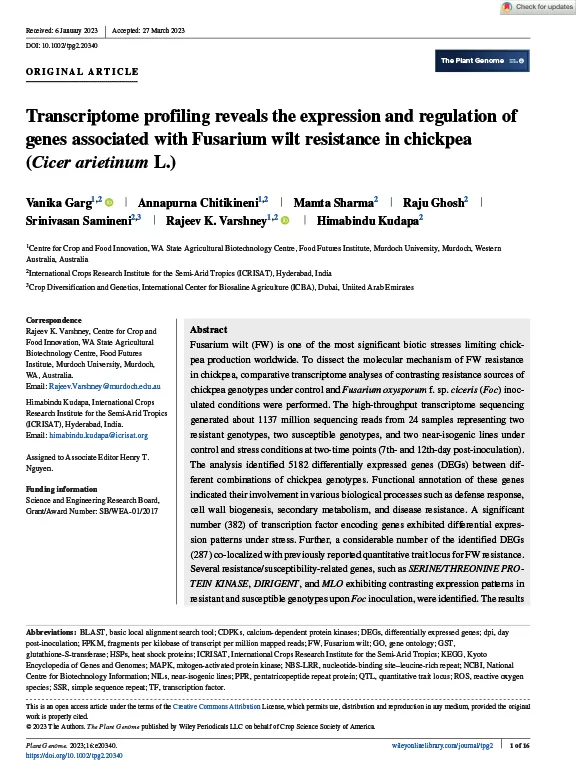Transcriptome profiling reveals the expression and regulation of genes associated with Fusarium wilt resistance in chickpea (Cicer arietinum L.)
Fusarium wilt (FW) is one of the most significant biotic stresses limiting chickpea production worldwide. To dissect the molecular mechanism of FW resistance in chickpea, comparative transcriptome analyses of contrasting resistance sources of chickpea genotypes under control and Fusarium oxysporum f. sp. ciceris (Foc) inoculated conditions were performed. The high-throughput transcriptome sequencing generated about 1137 million sequencing reads from 24 samples representing two resistant genotypes, two susceptible genotypes, and two near-isogenic lines under control and stress conditions at two-time points (7th- and 12th-day post-inoculation). The analysis identified 5182 differentially expressed genes (DEGs) between different combinations of chickpea genotypes. Functional annotation of these genes indicated their involvement in various biological processes such as defense response, cell wall biogenesis, secondary metabolism, and disease resistance. A significant number (382) of transcription factor encoding genes exhibited differential expression patterns under stress. Further, a considerable number of the identified DEGs (287) co-localized with previously reported quantitative trait locus for FW resistance. Several resistance/susceptibility-related genes, such as SERINE/THREONINE PROTEIN KINASE, DIRIGENT, and MLO exhibiting contrasting expression patterns in resistant and susceptible genotypes upon Foc inoculation, were identified. The results presented in the study provide valuable insights into the transcriptional dynamics associated with FW stress response in chickpea and provide candidate genes for the development of disease-resistant chickpea cultivars.
